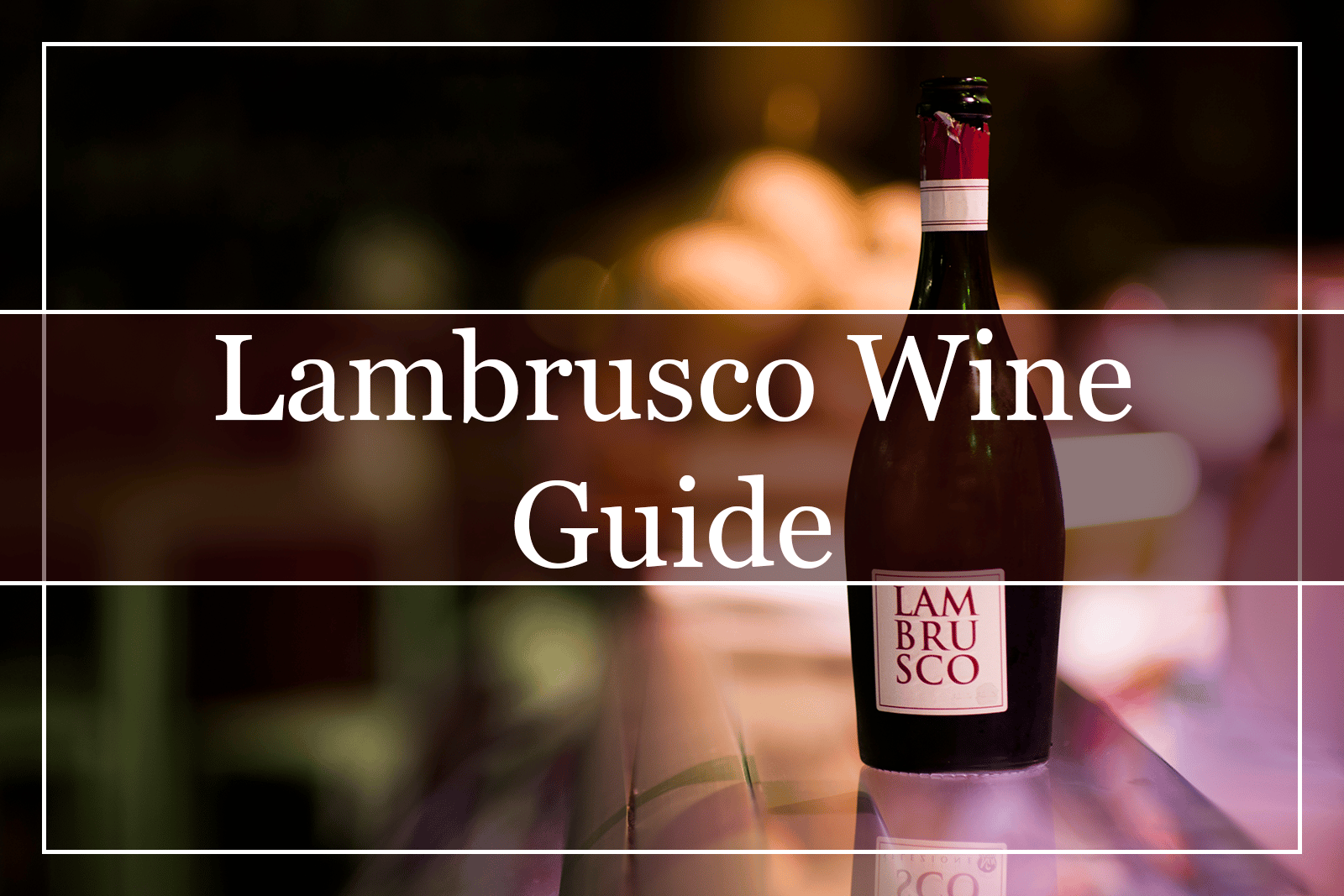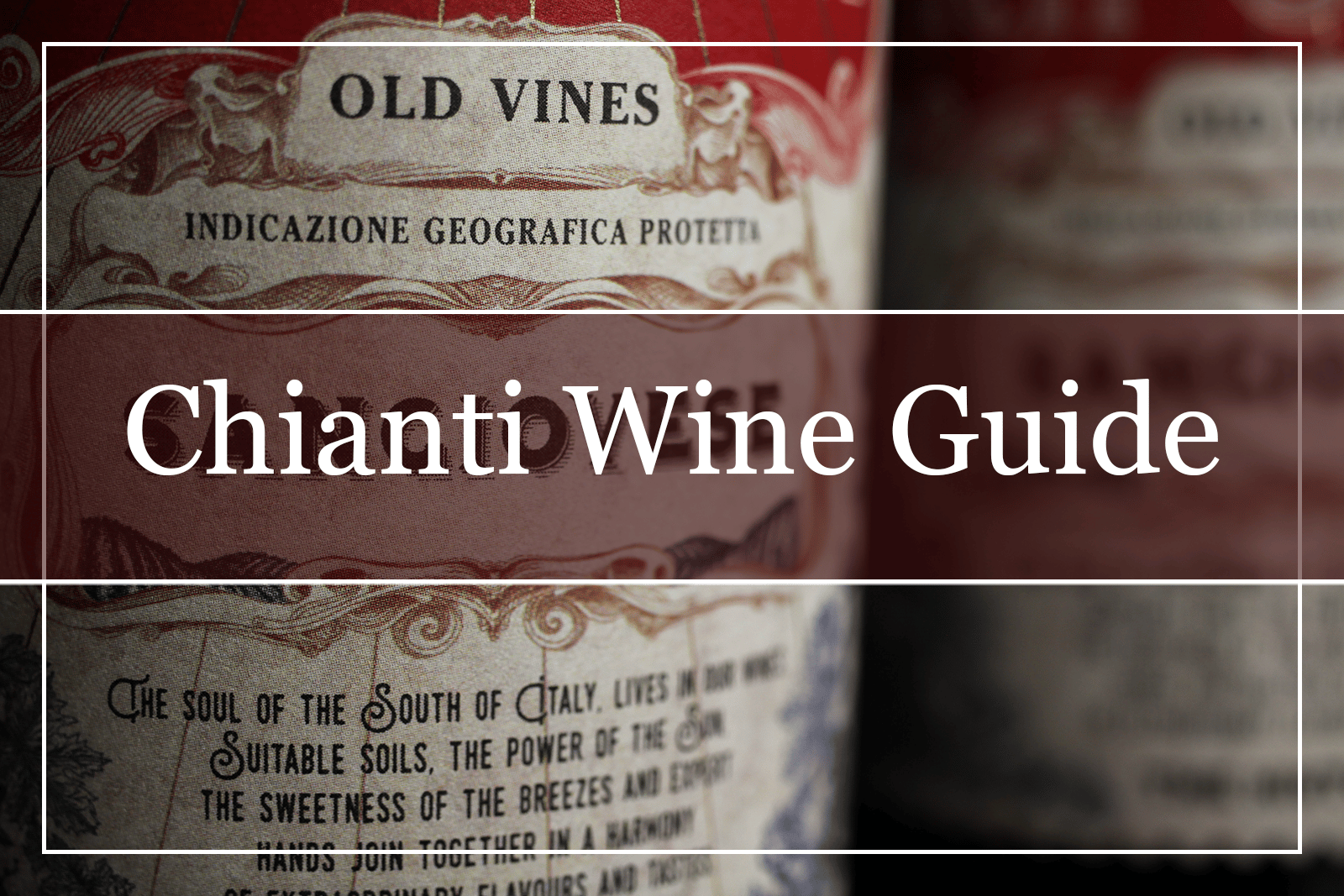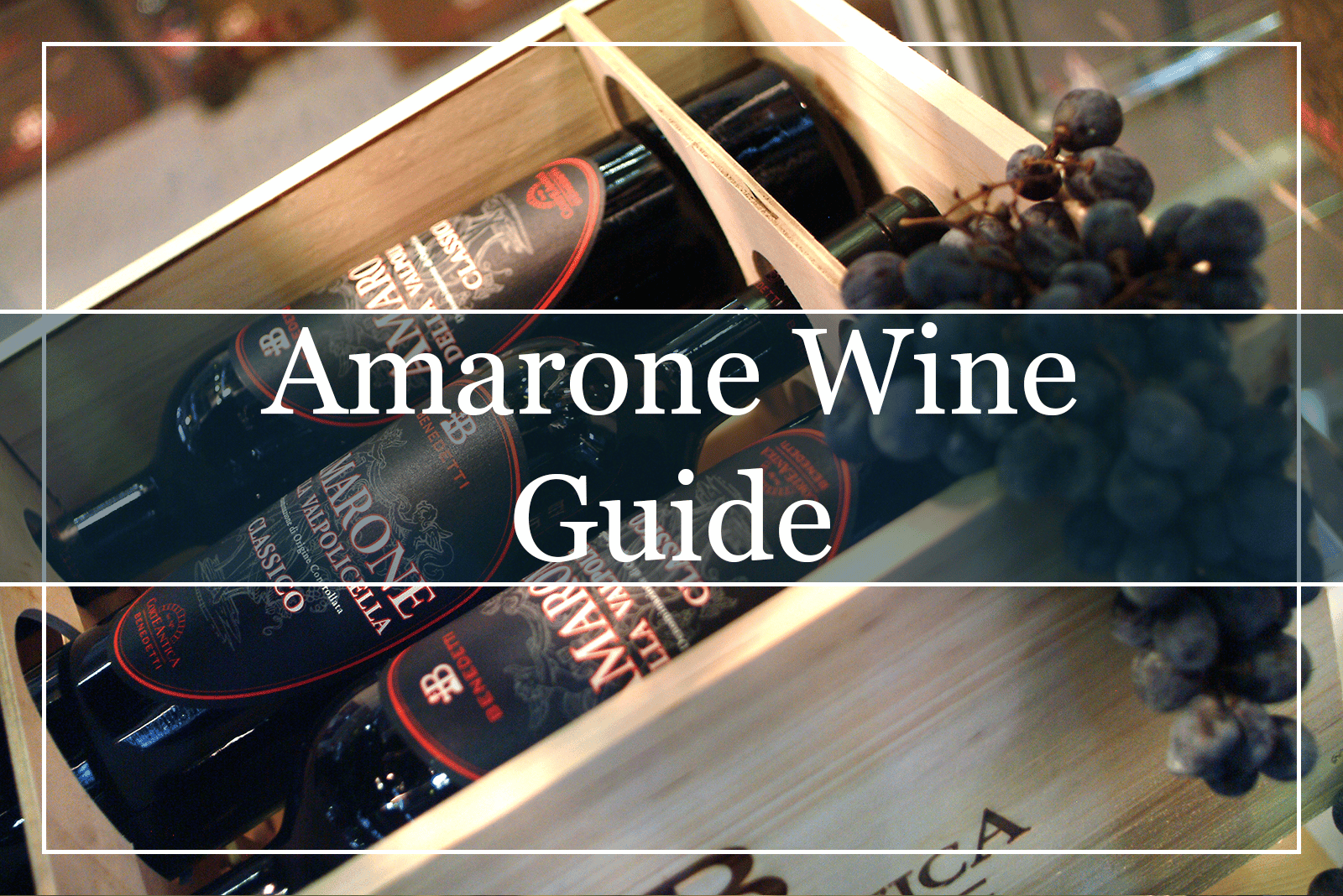What Is Moscato d’Asti?
Moscato d’Asti is a sweet sparkling wine with low alcohol levels from Piedmont (Piemonte) in northwestern Italy. The wine, as implied by its name, is made from Muscat grapes cultivated in Asti. Moscato d’Asti is one of the most famous wines of Italy.
The main grape variety used in Moscato d’Asti is the Moscato Bianco (Muscat Blanc à Petits Grains), which has been native to Piedmont for centuries. Moscato Bianco was recorded for the first time in the 13th Century in the town of Canelli. This town is still important to Moscato today, as it is the center of the Moscato d’Asti production zone and home to numerous notable wineries. Wines labeled as Canelli must contain 100% Moscato Bianco.
The Moscato d’Asti characteristics concentrate around a gentle fizziness and a subtle, pleasant semi-sweetness. On top of that, Moscato d’Asti displays pronounced floral fragrances and notes of stone fruit and grape juice, as well as a creamy finish with lingering passion fruit sensations.
Except for Moscato d’Asti there is also Asti Spumante. That is a drier sparkling with an alcohol concentration of 9% ABV. The difference between the two Muscato-based bubbles is the strength of the sparkle. In the Italian vernacular, Moscato d’Asti is considered frizzante (minimum pressure of 1 atmosphere), while Asti Spumante is spumante (minimum pressure of 4 atmospheres).
What Color Is Moscato d’Asti?
The Muscat Blanc à Petits Grains vine produces small bunches of thin-skinned fruit with a greenish-golden hue. Until berry ripening, which is a period winegrowers call véraison, the grapes are thick to the touch. During véraison, therefore, the grapes begin to ripen, while, at the same time, the skin of the grapes change color. It is wonderful to behold the transformation from translucent to gold. At the same time, during véraison, the grapes swell and fill with water, increasing their flavor concentration. The acidity levels drop as color pigments form. Long sunny conditions are vital for successful ripening and beautiful Moscato d’Asti color.
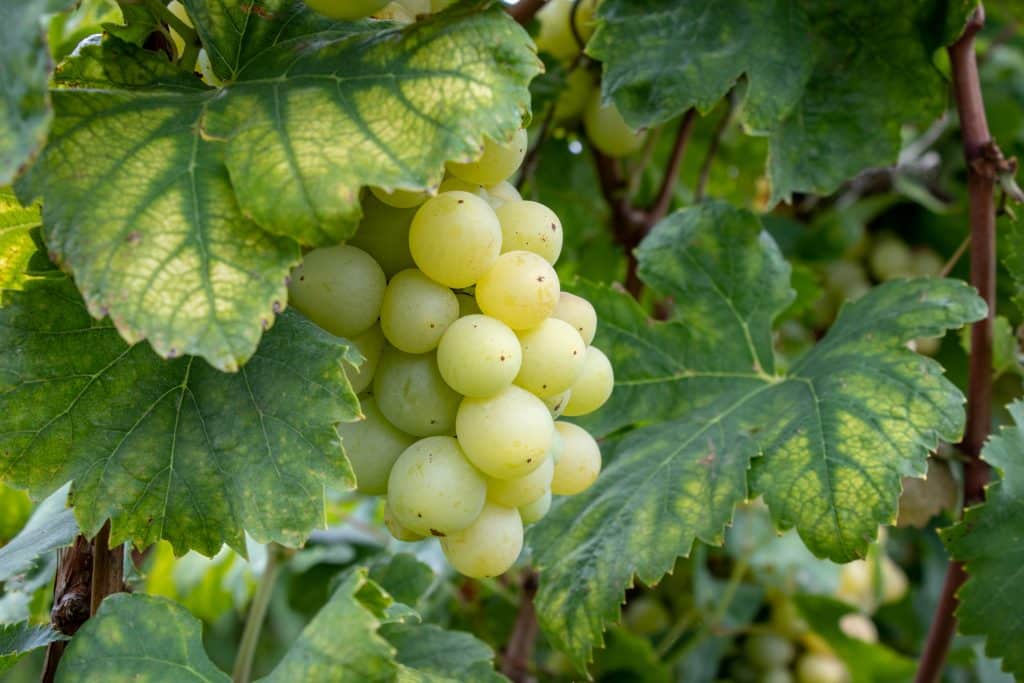
What Does Moscato d’Asti Mean?
Moscato d’Asti translates into sweet (wine) from Asti. Undoubtedly, therefore, the wine has been named after the Muscat grapes used to produce it. The origins of Muscat are challenging to pinpoint, as there are several theories about the origins of the Muscat name. The most common one suggests that Muscat derives from the Persian word ‘muchk’.
Similarly, in Greek, Muscat is translated as ‘moskos’ meaning a sweet-smelling aroma, Latin ‘muscus’ (moss), and French ‘musc’ (an intense smell). In Italy, there is the Italian word ‘mosca’ that means fly. It could be related to Muscat because the Muscat grapes have a sweet aroma and very high sugar levels, so they attract fruit flies.
Different theories place the origins of Muscat in Oman and that it took its name from the city of Muscat, located on the coast of the Gulf of Oman. Another theory suggests Muscat was named after the Greek Moschato city, located in Attica, Southwest of the capital Athens. Besides, Moschato is a common synonym in Greece for dessert wines made from Muscat.
How to Pronounce Moscato d’Asti?
The Moscato d’Asti pronunciation is not challenging, even for non-native Italian speakers. Learning how to pronounce it is pivotal, however, especially when seeking to join wine-tasting circles. You can find several helpful audio and video examples of how to pronounce Moscato d’Asti online. There are three syllables in Moscato, and the emphasis falls on the second syllable. Phonetically, Moscato looks like this:
mosh-kaa-toh
As to d’Asti, it is composed of two separate words. The first is di, and the second is Asti. But when together, they make a continuous word. To pronounce d’Asti, emphasize the first syllable:
dah-stee
Where Does Moscato d’Asti Come From?
The Moscato d’Asti wine-making zone is located in a hilly area south of Asti town, in Piedmont, northwestern Italy. It covers about 50 communes of the Alessandria, Asti, and Cuneo provinces. The zone’s eastern edge sees the Bormida River, which flows past Acqui Terme. There, Moscato vines grow next to Dolcetto and Brachetto vines used to produce Dolcetto d’Acqui and Brachetto d’Acqui respectively. Its eastern side is marked by Serralunga d’Alba village, where there are plenty of Nebbiolo vineyards.
Piedmont (or Piemonte) is characterized by mountains to the north that provide a rain shadow protecting the region from winds and precipitation. The climate is moderate and continental, with cold winters and summers that can be subject to thunderstorms, hail, and fog. Also, there are some moderating influences from the Po River in the south and Lake Maggiore in the north. Piedmont is known for its foothills, too, which provide different aspects and altitudes for viticulture. The Muscat vines in Asti are planted on such slopes.
Italy has many native grape varieties and, for this reason, it can produce a diverse range of wine styles. In addition, it is a region that has produced wine for over 1,000 years. It is important to note that Italy is also an advocate of the concept that the terroir is the most important factor in winemaking, and that the role of the winemaker is of secondary importance.
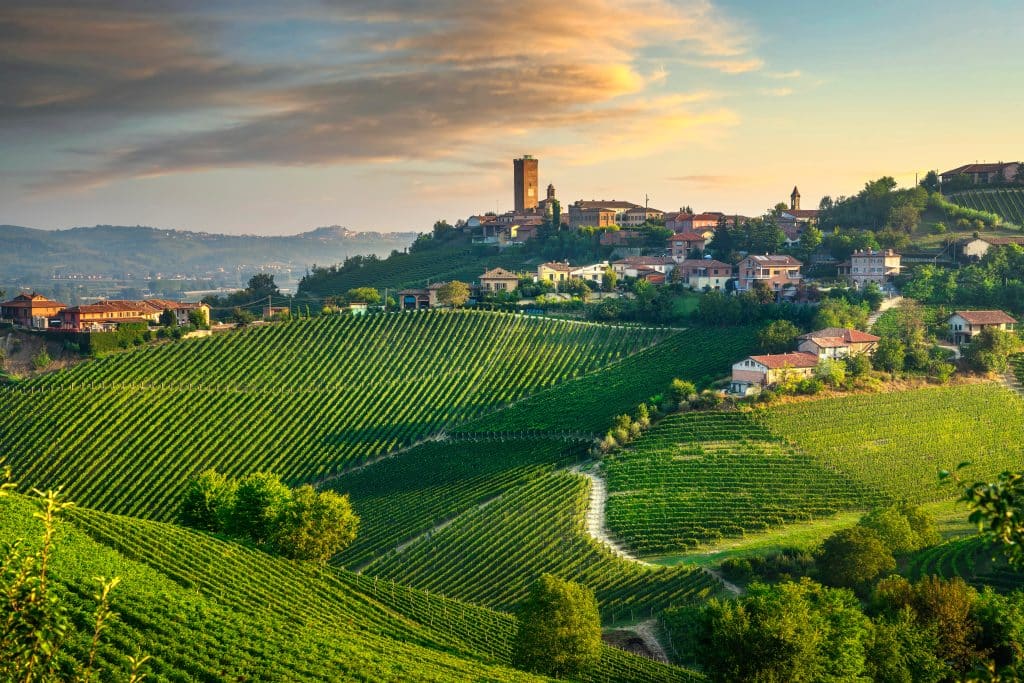
What Kind of Wine Is Moscato d’Asti?
Moscato d’Asti is a sweet sparkling wine without autolytic properties so it doesn’t detract from the fruitiness of Muscat. Serve it as an aperitif or as a palate cleanser after dinner. Or sip it poolside when the sun is high in the sky.
The Asti Method
Moscato d’Asti is made with the Asti Method used exclusively in Asti, Piemonte to produce sweet sparklings. The difference between the Asti Method with the Tank Method is that only one alcoholic fermentation is involved. After harvesting, a simple Muscat wine is created. This base wine is immediately chilled and stored. When required for the production of the Moscato d’Asti, it is warmed and fed into pressurized tanks to undergo fermentation.
At the beginning of the fermentation, carbon dioxide is allowed to escape. Afterward, though, the tanks are sealed so that the remaining dioxide is contained. The fermentation continues until 7%. At this point, the pressure is 5 to 6 atmospheres, and the wine is chilled, killing the yeasts, ending the wine production. The final wine is filtered from sediments and bottled. Then, the Moscato d’Asti goes immediately for sale.
Is Moscato d’Asti Dry or Sweet?
For the most part, Moscato d’Asti is semi-sweet and prized for its lightness and freshness. That means that it can be enjoyed at mealtime or even complement a dinner. According to tradition, Moscato d’Asti is drunk just before dessert as a palate cleanser. Due to its affordability, this wine is the choice of younger drinkers, although it is the preferred sparkler of celebrities and famous people, as well.
What Does Moscato d’Asti Taste Like?
The Moscato d’Asti tasting notes are mellow and sweet, emitting stone and exotic fruit sensations. The Moscato d’Asti aroma is packed with fresh grapes, peaches, Meyer lemons, honeysuckle, and orange blossoms. The Moscato d’Asti flavor tingles the taste buds with its gentle carbonation (frizzante) and crispy acidity. On top of that, expect to taste the sweetness of nectarine, apricot, peach, and a few tropical fruit flavors, such as pineapple and mango. Faint notes of honey and some red berries are discernible, too. Sipping Moscato d’Asti is always a pleasure. Bright, a tad sweet, but invigorating.

How to Serve Moscato d’Asti?
The wine is best served chilled, no question. The perfect temperature to serve Moscato d’Asti is at 45 to 55°F (7-10°C). When chilled, the sparkler gets even more refreshing and aromatic, as the pronounced mellowness is gentler on the tongue, without being overbearing. In addition, by far, the ideal glassware for Moscato d’Asti is flute glass. Wine experts suggest that the glass shape enhances the aromatic fragrances of the Moscato d’Asti and encourages the flow of the racy bubbles. The flute is also tall, easy-to-hold, and thin, radiating elegance and pure sophistication. Flawless!
Keep your Moscato d’Asti cool during service to ensure that its freshness lasts until the last sip. To keep this sparkler cool, use an ice bucket. The bucket should be filled three-quarters full with equal quantities of ice and water so that iced water surrounds the bottle. Then, the water can transfer the heat from the bottle to melt the ice. Air acts as an insulator, and the bottle chills. That said, be careful, as over-chilling shadows the flavors in wines.
How Long Should Moscato d’Asti Breathe?
The goal of aeration is to expose the wine to oxygen in the air. A rudimentary way to aerate is to just swirl the wine in the glass. That is what you should do with Moscato d’Asti. Pouring it into a decanter will not help it, as its foamy mouse will subside, resulting in an uninspiring bubbly. The air from swirling is enough to revitalize some of the wine’s citrus and stone fruit flavors and aromas.
What Food to Pair With Moscato d’Asti?
In Piedmont, where Moscato d’Asti comes from, the locals drink red wine almost exclusively while eating. In fact, the thought of serving Moscato d’Asti with savory foods seems outrageous to them. However, across the world, we see Moscato d’Asti combined with international cuisines and a variety of different dishes, from seafood to poultry-based courses.
Moscato d’Asti is traditionally a dessert wine served with dry pastries (pasticceria secca). These pastries do not have custard, cream, or jelly, but they are plain like cookies. Try to pair the wine with orange sorbet, raspberry tart, coconut pudding, peach shortcake, or coffee cake for the best result.
This bubbly is perfect with spicy food, too. The low alcohol and sweetness of Moscato d’Asti make it a divine companion to courses such as Sichuan beef, Cajun-style chicken wings, Thai crab curry, or chili con carne. Likewise, salty snacks like nuts or cured meats (think of salami, prosciutto, and pancetta) balance the wine’s sweetness. As such, with so many choices, the Moscato d’Asti food pairing becomes a one-of-a-kind experience.

Moscato d’Asti Cheese Pairing
Moscato d’Asti is ideal to drink with strong cheeses. Creamy Camembert, Gorgonzola, Mascarpone, and Brie counterbalance the wine’s vibrant fruit-forward profile. At the same time, veined blue cheeses with pronounced flavors, like Murianengo or Gorgonzola, pair well with Moscato d’Asti. The sweetness of the Moscato offsets the saltiness of the blue cheeses, offering a marvelous food pairing.
How Much Alcohol Does Moscato d’Asti Have?
The Moscato d’Asti alcohol content is typically around 5.5% to 7% ABV. Therefore, Moscato d’Asti is a fantastic wine choice for light drinkers. Before serving the wine, however, check the label on the bottle to be more precise.
How Many Calories Are There in Moscato d’Asti?
As a sweet wine, Moscato d’Asti has a high-calorie density. The carbs in Moscato d’Asti are 13.5 per glass, while the calories are 110 to 120 per serving. The amount of residual sugar is a matter of concern for wine enthusiasts on a diet, though. Moscato d’Asti has 14 grams of sugar per serving. That needs consideration by wine fans with a low-sugar lifestyle.
Conclusion
Moscato d’Asti, along with Prosecco, is one of the most iconic wines of Italy. Semi-sweet, fragrant, and very fruity, it is pure perfection. For those on the lookout for a classy sparkler, Moscato d’Asti is an excellent option. Lower in alcohol than Champagne and much cheaper, but just as great to enjoy. There is nothing better than returning from a tough day at the office and pouring yourself a glass of Moscato d’Asti. Heavenly goodness!



